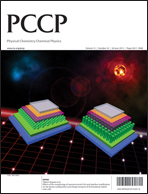The detailed characterization of electrochemically switchable molecular assemblies on silicon electrodes†
Abstract
In this paper we explore a multi-step synthetic strategy toward fabrication of monolayer-modified Si(100) electrodes that can be electrochemically switched. The synthetic scheme is modular and benefits from an established intramolecular lactonization scheme of


 Please wait while we load your content...
Please wait while we load your content...